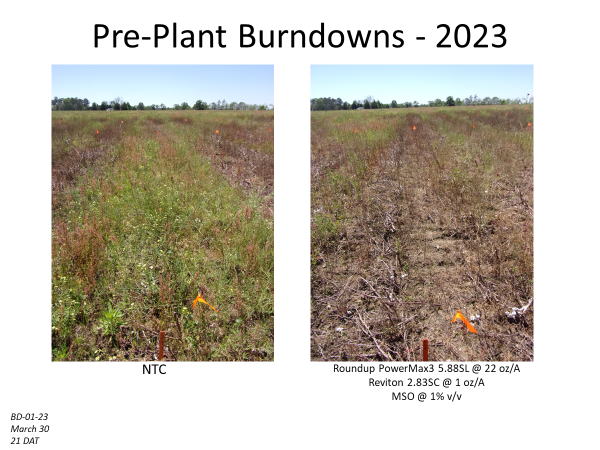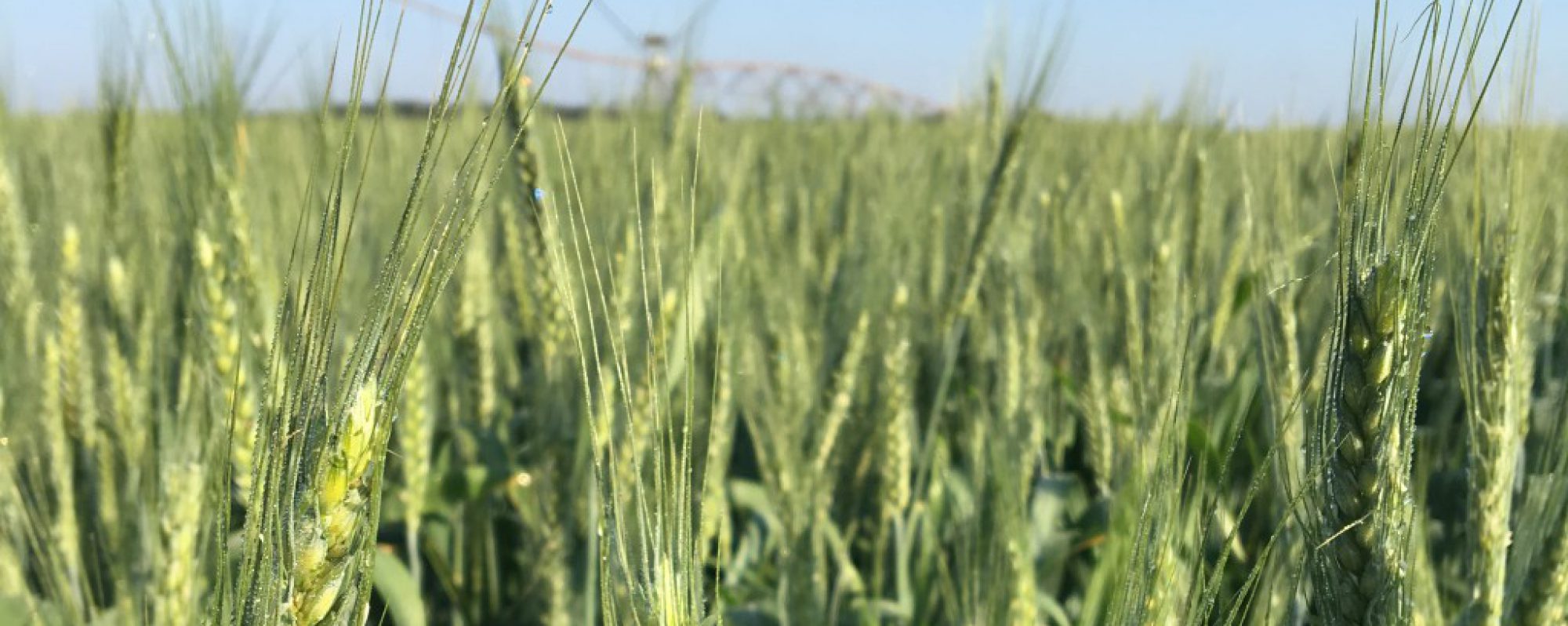Per Dr. Prostko
I am still getting quite a few inquiries about pre-plant burndowns. Thus, I thought you might be interested in seeing some of the early results of a current pre-plant burndown test located in Tift County.
1) All treatments were applied at 7 am on March 9, 2023 (15 GPA with AIXR11002 spray tips). Main weeds evaluated were wild radish (18-24″ tall, flowering) and red sorrel (20-32″ tall, flowering).
2) In the first 14 days after treatment (DAT), low temperatures dropped below 45 F for 7 nights.
3) Observations and pictures obtained on March 30 (21 DAT) are as follows:
a) Gramoxone 3SL (paraquat) @ 32 oz/A + Induce (0.25% v/v) was very effective. No other treatment was more effective in this test.


b) Any treatments with Roundup PowerMax3 (glyphosate) + either atrazine, 2,4-D or dicamba were not as effective as anticipated based upon my prior experiences. I suspect that the cold weather after application influenced the effectiveness of these treatments. Had I known it was going to be so cold, I probably would have bumped up the rate of Roundup slightly and/or used additional adjuvants (i.e. ammonium sulfate and/or crop oil). Maybe these treatments will look better in another week???


c) Roundup + Reviton 2.83SC (tiafenacil) treatments were also very effective. Reviton label rotation restrictions are as follows: field corn = 0 days; soybean = 7 days; cotton = 7 days (1 oz/A) or 14 days (2 oz/A). Reviton peanut rotations restrictions are currently in the process of being reduced to 0 days (1 oz/A) and 7 days (2 oz/A). Estimated cost of Reviton is around $5-6/oz.


d) The surprise treatment of this test was the combination of Roundup + Sharpen (saflufenacil). I have not talked that much about Sharpen in the past because its main claim to fame has been horseweed. Horseweed is usually not the major burndown weed in many south Georgia fields (wild radish and cutleaf evening primrose hold that title). Perhaps I need to re-evaluate my position on this one??? Current label rotations for Sharpen are as follows: field corn/sorghum = 0 days; soybeans = 30 days; cotton = 42 days + 1″ rainfall/irrigation; and peanuts = 120 days.

4) I am not making any “official” recommendations here. These comments are based upon observations from this test yesterday (21 DAT). It takes multiple years of data and observations to formulate “official” control recommendations that eventually get added to the UGA Pest Control Handbook.
